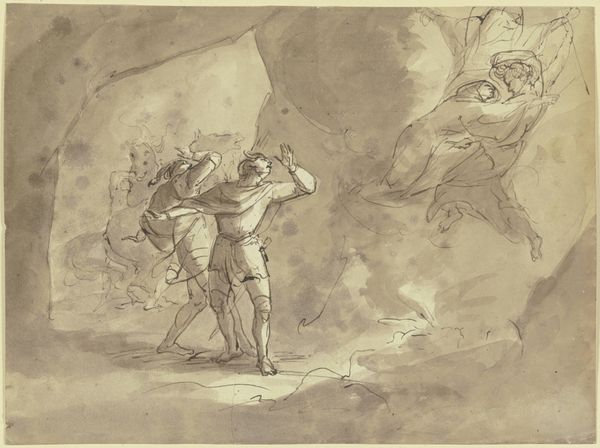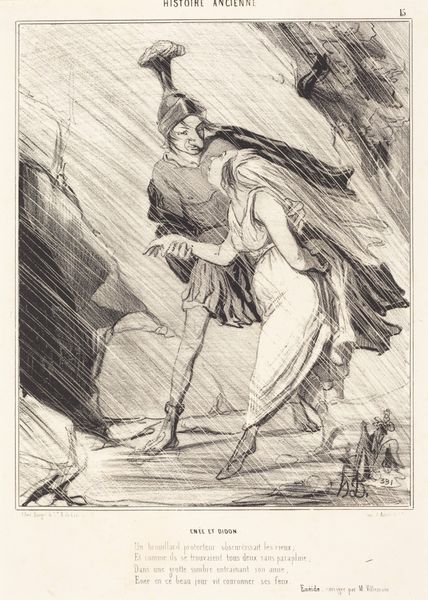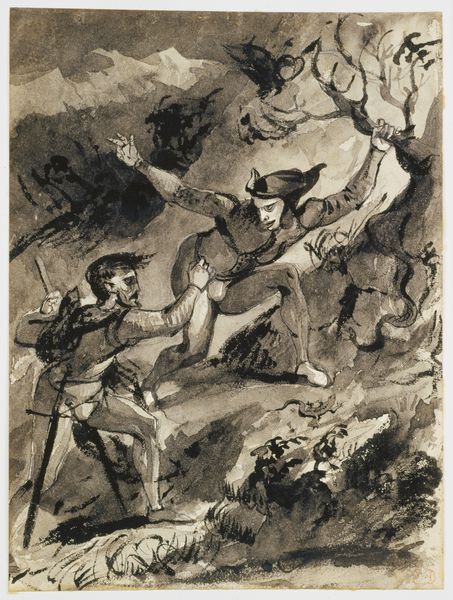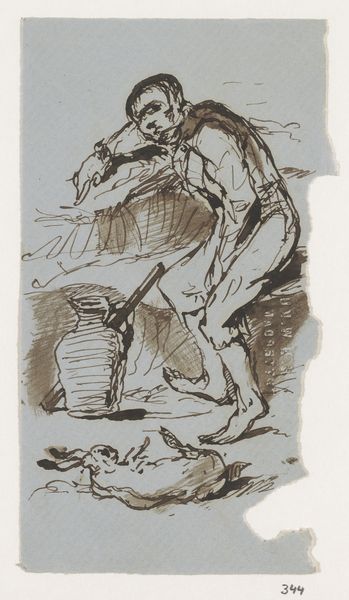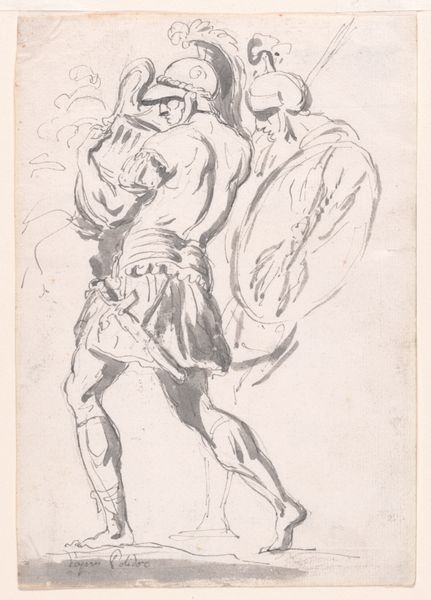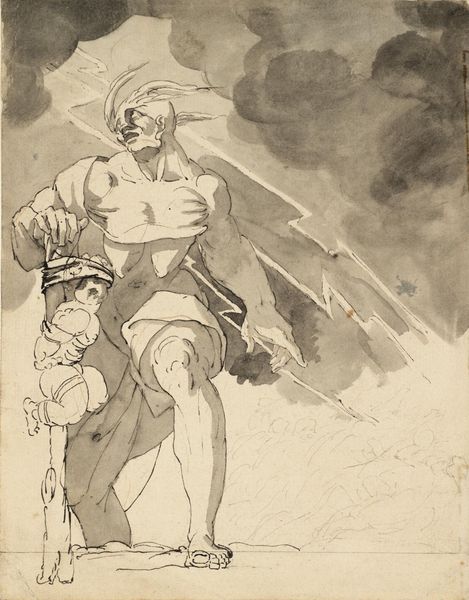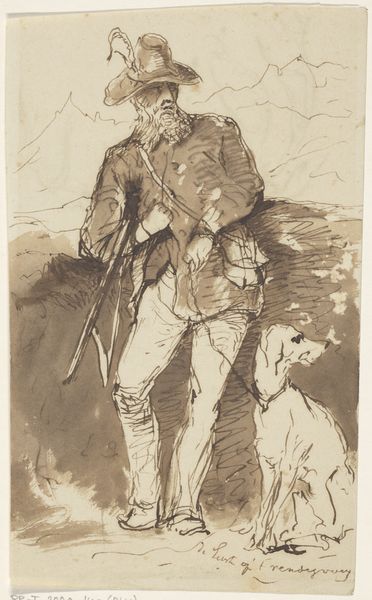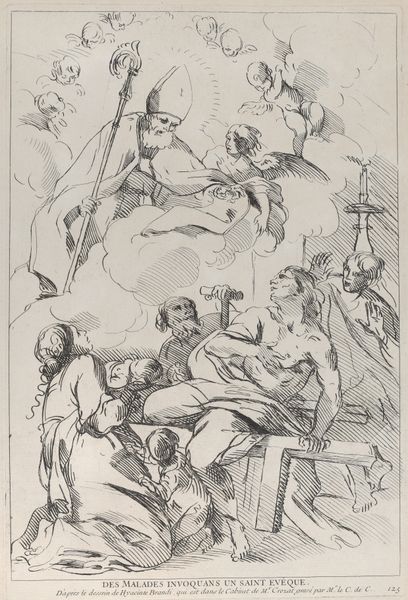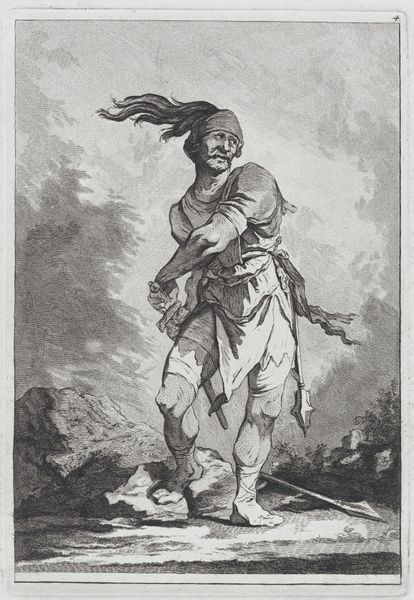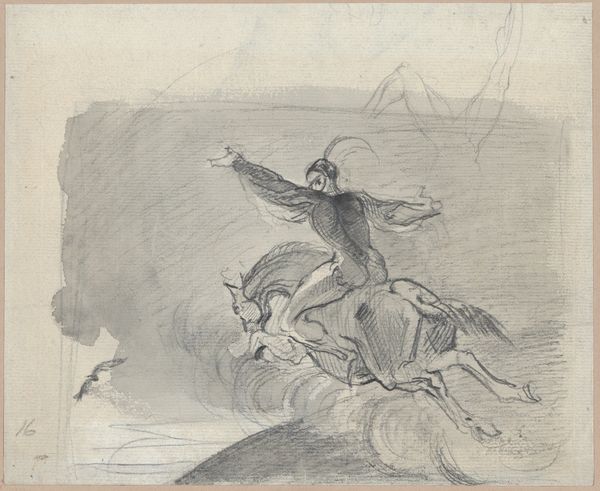
Male Traveler in a Storm (recto); Anatomical Studies of a Foot (verso) 1770 - 1780
0:00
0:00
Dimensions: Sheet: 9 7/16 × 7 9/16 in. (24 × 19.2 cm)
Copyright: Public Domain
Curator: It's almost monochromatic; the stark shades give it such drama. Editor: Indeed. What strikes me about "Male Traveler in a Storm," a drawing attributed to William Hamilton around 1770 to 1780, is how economically it captures the Romantic spirit. You have a solitary figure, battling nature itself. Curator: He looks properly windswept, doesn’t he? That determined angle of his head, shading his eyes. You can almost feel the rain on your face just looking at it! There’s such a vulnerability there too – like he’s facing something massive and unforgiving. I get the romanticism of it, totally. Editor: Precisely! Notice how Hamilton employs a simple palette, relying on the tonality and dynamism of pencil lines. The contrast between light and shadow—chiaroscuro, if you will—heightens the emotional intensity. The very swiftness of the marks, barely there on the traveler’s face or limbs and darker around the threatening background, it speaks to both a physical and psychological turmoil. Curator: Right, like a raw emotion spilling onto the page! Do you think he drew this from life? I mean, being out in a storm like that... you would be shivering just thinking about sketching under those conditions. Editor: Unlikely, though that’s a valid question. Most likely, this kind of scene came from literary paintings that were being created at that time. Consider, too, the artist was British, in an era when wealthy Brits would make the ‘Grand Tour’ around Europe, taking in ruins and scenes such as this… though this drawing, I think, also owes a debt to History Paintings with its rather formal rendering of the human figure, though even more romantic, still. The man looks like he is at the ready! Curator: It’s strange and great because you can just see him as a vulnerable, solitary wanderer, just as much as you can picture some kind of heroic ideal too! Hamilton's managed to catch a fascinating moment here. It really lets your imagination run wild. Editor: Well, considering this as part of a series of studies makes a good bit of sense, as Hamilton does an anatomical study of a foot on the reverse of this sheet. The sublime and the minute! I will always value Hamilton’s close and deeply considered work, especially its reflection of a time caught between social unrest and Romanticist ideas.
Comments
No comments
Be the first to comment and join the conversation on the ultimate creative platform.
